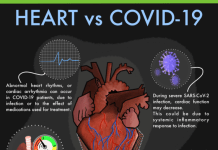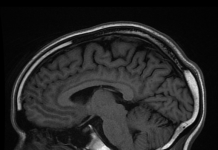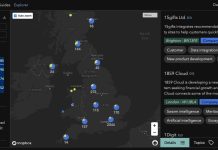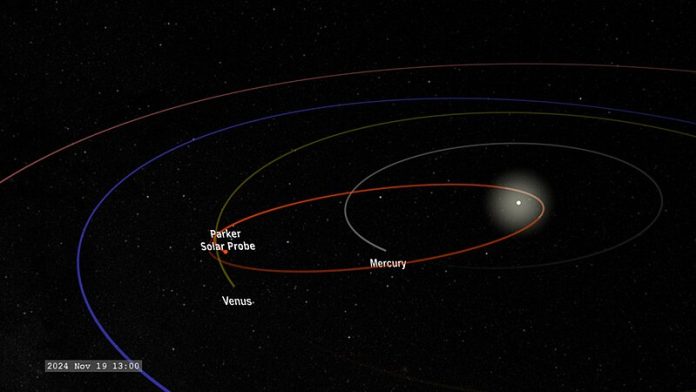Parker solar probe has sent signal to Earth today on 27 December 2024 confirming its safety following its closest approach to Sun on 24 December 2024 at the distance of 3.8 million miles. It made the flyby at a speed of 430,000 miles per hour which is the fastest ever speed of any human-made object. The spacecraft was incommunicado since making the closest solar flyby in history on 24 December 2024. In 2021, Parker Solar Probe became the first spacecraft to fly through the corona. Named after Eugene N. Parker, the discoverer of solar wind, Parker Solar mission aims to enhance understanding of the Coronal Heating Paradox (superheating of solar corona to millions of degrees centigrade) and the origin and acceleration of solar winds.
On 27 December 2024, Parker Solar Probe has sent signal to Earth confirming its safety following its closest approach to Sun on 24 December 2024.
The spacecraft was incommunicado since making the closest solar flyby in history when it flew just 3.8 million miles from the solar surface.
The spacecraft has four instrument suites (for studying magnetic fields, plasma, and energetic particles, and image the solar wind) which are protected from the Sun by a 11.43 cm-thick carbon-composite shield, which can withstand temperatures up to about 1,375 degrees Celsius. There was a suspicion that the brutal heat and radiation may have damaged the heat shield of the spacecraft making the payloads ineffective. However, the Probe has sent a beacon tone back to Earth confirming its good health status and operational normality. The detailed telemetry data on its status is expected on 1 January 2025.
On 24 December 2024, the Parker Solar Probe made the closest solar approach in history when it flew approximately 3.8 million miles from the solar surface at a speed of 430,000 miles per hour which is the fastest ever speed of any human-made object. In the closest solar approach, the Parker Probe took measurements that should help better understand the Coronal Heating Paradox (superheating heating of solar corona to millions of degrees centigrade) and solar winds.
Launched on 12 August 2018, Parker Solar Mission is an orbiter mission. The spacecraft gradually orbited closer to the Sun’s surface during the perihelion (the point in the orbit at which it is closest to the sun). The Probe will complete 24 orbits around the Sun over seven years. In 2021, it became the first spacecraft to fly through the corona. In the closest approach on 24 December 2024, it came as close as 3.8 million miles to Sun.
The mission is named after Eugene N. Parker, a solar and plasma physicist who discovered solar wind.
****
References:
- NASA. NASA’s Parker Solar Probe Reports Successful Closest Approach to Sun. Posted 27 December 2024. Available at https://blogs.nasa.gov/parkersolarprobe/2024/12/27/nasas-parker-solar-probe-reports-successful-closest-approach-to-sun/
- NASA Science. Parker Solar Probe. Available at https://science.nasa.gov/mission/parker-solar-probe/
- The Johns Hopkins University Applied Physics Laboratory. News – NASA’s Parker Solar Probe Reports Successful Closest Approach to Sun. Posted 27 December 2024. Available at https://parkersolarprobe.jhuapl.edu/News-Center/Show-Article.php?articleID=206
- Guo Y., 2024. Flying Parker Solar Probe to touch the Sun. Acta Astronautica Volume 214, January 2024, Pages 110-124. DOI: https://doi.org/10.1016/j.actaastro.2023.10.020
***







































